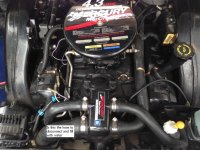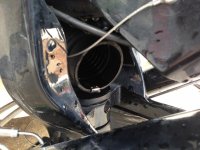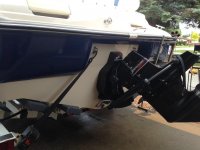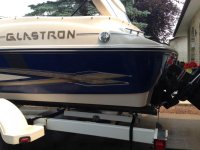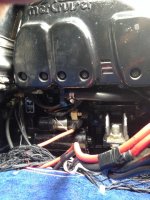Hello All,
Here's my situation, took the boat out for the fourth time this past weekend (it has been working just great so far). When we launched it it started great first time, took it out through the channel and into the open water and headed for the shoreline to have a bite to eat. when we were ready to go out again the motor only turned over about a quarter turn then stopped, tried the starter a few times and the same thing happened, partial turn over but no start. after about the six time the starter turned but just whined like it wasn't engaging the flywheel gear. removed the starter tonight and took it apart, found the plastic cup gear that is driven by the three planetary gears completely stripped . New starter needed, but before i just replace it i would like to find out why it stripped, does this happen from fatigue over time. the engine is a 2000 4.3 Mercruiser 190Hp with a GM #PG260-F1 starter, I have owned the boat for 5 years so I don't know if it is the original starter. Is there a way of turning over the engine manually to make sure it didn't seize up, i shouldn't think there would be a reason to seize, it was running fine just a half hour before and all gauges were OK.
. New starter needed, but before i just replace it i would like to find out why it stripped, does this happen from fatigue over time. the engine is a 2000 4.3 Mercruiser 190Hp with a GM #PG260-F1 starter, I have owned the boat for 5 years so I don't know if it is the original starter. Is there a way of turning over the engine manually to make sure it didn't seize up, i shouldn't think there would be a reason to seize, it was running fine just a half hour before and all gauges were OK.
Any words of wisdom is always appreciated.
Thank you in advance, G Jackman
Here's my situation, took the boat out for the fourth time this past weekend (it has been working just great so far). When we launched it it started great first time, took it out through the channel and into the open water and headed for the shoreline to have a bite to eat. when we were ready to go out again the motor only turned over about a quarter turn then stopped, tried the starter a few times and the same thing happened, partial turn over but no start. after about the six time the starter turned but just whined like it wasn't engaging the flywheel gear. removed the starter tonight and took it apart, found the plastic cup gear that is driven by the three planetary gears completely stripped
Any words of wisdom is always appreciated.
Thank you in advance, G Jackman


